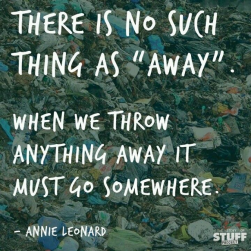Here it is, the final week of my PSP to pack my own lunch made with local organic products and use a reusable water bottle. The experience has been eye opening in that it hasn’t really been a challenge. I enjoyed planning my lunches out for the week, and going to the farmers market to pick out produce and groceries. I calculated that I saved roughly $15 each week by packing my own lunch and not consuming bottled water. By packing my own lunch I cut out four weeks of one time use containers. I also cut down on my total weekly driving by consolidating my car trips to purchase groceries to two trips.
To measure the impact of my PSP I’m going to start with bottled water. I normally drink about the equivalent of five bottles of water daily. Three of the equivalents would actually be bottled water that I purchased. Over the course of a week I would drink 21 bottles of water. My PSP is four weeks long, which makes the total water bottles saved 84. That number seems pretty high when I calculate it out. According to the International Bottled Water Association (IBWA) benchmarking study “1.32 liters of water and 0.24 mega joules of energy are used to produce every one liter of finished bottled water” (“Water,” 2014). That means I reduced the amount of electricity I consume by 20.16 mega joules, which is enough electricity to run a 100watt lightbulb for six hours. I also reduced my water footprint by roughly 27 liters. That’s a lot for just packing a water bottle around with me.
Calculating how much of an impact purchasing local organic food has is more complicated. From research I did online, I could only find that the carbon footprint difference between organic and non-organic food varies largely by crops. This means that the impact of purchasing organic food was mostly just keeping the pollutants, like pesticides and herbicides, out of the ecological system. Calculating the impact of purchasing local produce is difficult too, because I would have to know where the produce would have be coming from if I had not bought local. I estimate that the difference in impact would have been great.
I believe that my PSP wasn’t an inconvenience, and actually was fun for me. During my PSP I also got my friends involved by getting them to go the farmers market with me. Checking out the local goods and socializing with others there make it hard to have a bad experience, plus seeing all the fresh produce makes it equally tough not to take some home. I learned that making small changes can have an impact that is bigger than it seems. I also see that sustainability doesn’t have to be an idea that only requires sacrifices. If anything, I personally benefitted economically by making my own lunches and reusing a water bottle, I benefitted socially by going grocery shopping with friends, and I benefitted environmentally by reducing my carbon and water footprint.
References:
Water and Energy Use Benchmarking Study: Executive Summary. (2014, October 24). Retrieved July 17, 2015.
Photos Retrieved From:
http://theilladelph.blogspot.com/2007/08/in-praise-of-philadelphias-delicious.html













